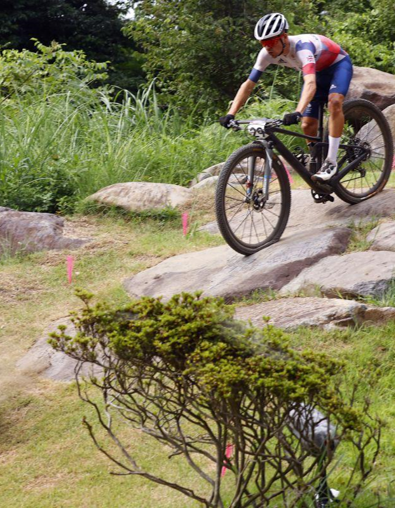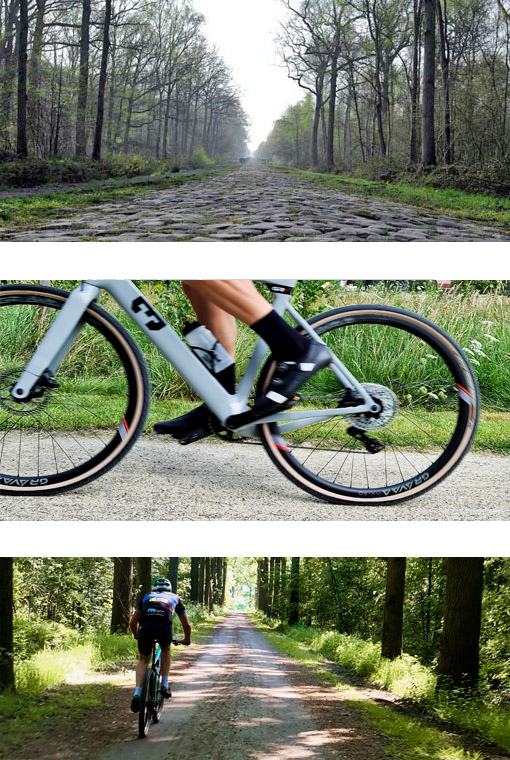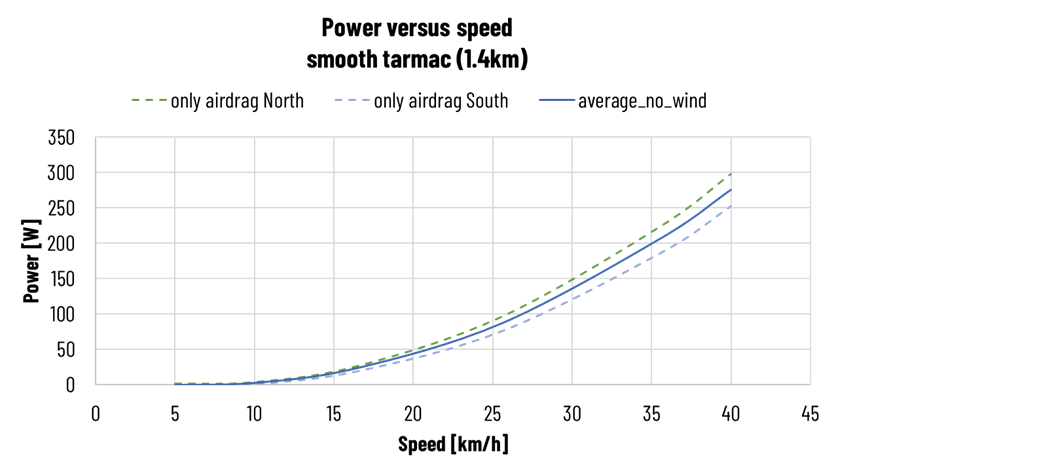
What is the optimal tyre pressure?
Many research has been done towards the optimal tyre pressure by various institutes. Due to a huge variety of tracks/surfaces, tyre types, bike types, environmental conditions, personal preferences, and varying research methods, it is hard to give a general conclusion towards this question. It is well-known that tyre pressure affects mechanical impedance: the resistance against motion is affected. On smooth surfaces, like tarmac roads, the effect of tyre pressure on rolling resistance can be determined more directly, for instance by using drum tests. However, on non-smooth surfaces, like cobblestones, trails, or sand paths, other effects like vibrations, damping thereof (by rider and bike), and keeping traction (‘keeping contact with the ground’) become more important. Aforementioned drum tests typically do not take these effects into account. In the end, you have personal preferences (amongst others: your bike, weight, and ride style) which affect the choice for certain tyre pressures, one favors comfort, the other favors optimal speed.
GRAVAA has done a preliminary research on the effect of tyre pressure on different road surfaces.
Please note that the outcome is for illustrative purposes only, we do not claim to be complete.
Test setup

GRAVAA performed a preliminary study, using:
- Basso gravel bike, equipped with:
- Gravaa GX-30 wheels,
- Challenge Grifo Pro 29×1.30” (33-622) tyres,
- Favero Assioma DUO Power Meter (both pedals), and
- Garmin Edge 830
- Three sections: rough cobblestones (500m), smooth tarmac (1400m), and sand (1000m); ridden in both directions.
- Multiple test days, all with mild weather (no rain, wind <2Bft).
- Test rider: 75kg
During the tests we measured elapsed time, distance, speed, power, and of course: tyre pressure in both front and rear tyres. In all cases, we kept a constant offset of 0.2bar between the rear tyre and the front tyre, for instance a tyre pressure of 3.5 bar means: 3.5 bar at the front, and 3.7 bar at the rear tyre.
Results
As a benchmark, repetitive tests were done on a smooth tarmac section, cycling in both directions to neglect the effect of wind direction. The test were done at different speeds and with a tyre pressure of 3.5bar. From this data, information about aerodynamic drag is gathered, to isolate this effect from further measurements.

Further on, tyre pressure has been lowered on tarmac (also testing 2.5 bar and 1.5 bar). All tests were again repeated multiple times on the same section – riding in both ways like before. From this, aerodynamic drag was subtracted to determine the rolling resistance. Clearly, some differences are observed. For example, when riding at 25 km/h with 1.5 bar it takes 12 W more (in total) compared to 3.5 bar tyre pressure, using the current test setup with the Challenge Grifo Pro 29×1.30” tyres.

On non-smooth surfaces the impact of tyre pressure on the power consumption was expected to be much higher, since damping of the tyres (and consequently: keeping traction) plays a major role. The consequence hereof is that lower pressures – until a certain limit – result in less resistance (in contrast to smooth surfaces). Therefore, a rough cobblestone section and compact sand track were selected. Again, these surfaces were ridden in both ways, with different speeds and using different tyre pressures. The table below summarizes the results at 25 km/h. From this, it can be observed that:
- Lowering tyre pressure from 3.5 to 2.0 bar on cobblestones, will give a benefit of 32 W.
- On compact sand, the gain is (going from 2.5 to 1.1 bar) 49 W.
It must be noted that these results are valid under the used test conditions only, but it is clear that the impact of tyre pressure is significant.

Conclusion: what do I finally gain using GRAVAA wheels?
As mentioned earlier, we do not claim to give a complete answer on this – neither is this study complete – but the results above illustrate a clear effect. Below we compare the power loss and power gain for GRAVAA wheels, to give a conclusion hereto.
Power loss
As explained on the KEY COMPONENTS page, you need to deliver about 4W to each pump, when switched on, riding at 25km/h. This means a total power loss of 8W, while inflating both tyres only. As soon as you do not use the system to inflate, there is no power loss by the KAPS inside. Also deflating ‘costs’ nothing.
Power gain
The test results above show significant differences. Whilst on smooth surfaces the gain is in the range of 10 W (depending on type of tyre, speed, weight and more), on non-smooth surfaces like cobblestone roads and compact sand tracks this can reach levels up to about 50 W.
Overall conclusion
The temporary power loss by switching the pump on can easily be compensated by the power saving, resulting from the correct tyre pressure. Thereby, it costs relatively a lot of energy riding with a too high pressure on non-smooth surfaces. In such case, the GRAVAA wheels can then very quickly deflate your tyres, within seconds. In case of smooth surfaces, it takes a bit longer to inflate your tyres again (generally, this is also done within a few minutes) but the energy saving is also less on smooth roads. Hence, it remains dependent on a lot of factors and of the tracks you choose, but for the first time you will have the option to play with your tyre pressure while riding, endlessly.
Besides the energetic benefits, other system benefits include:
- Give early warnings in case of punctures,
- Adapt your tyre pressure levels while riding, both inflate and deflate,
- Keep your tyre pressure at a set level during your rides,
- Display the actual tyre pressure,
- Lower the chance of punctures,
- Protect against excessive wear, and
- Compensate for leakages in case of punctures.
